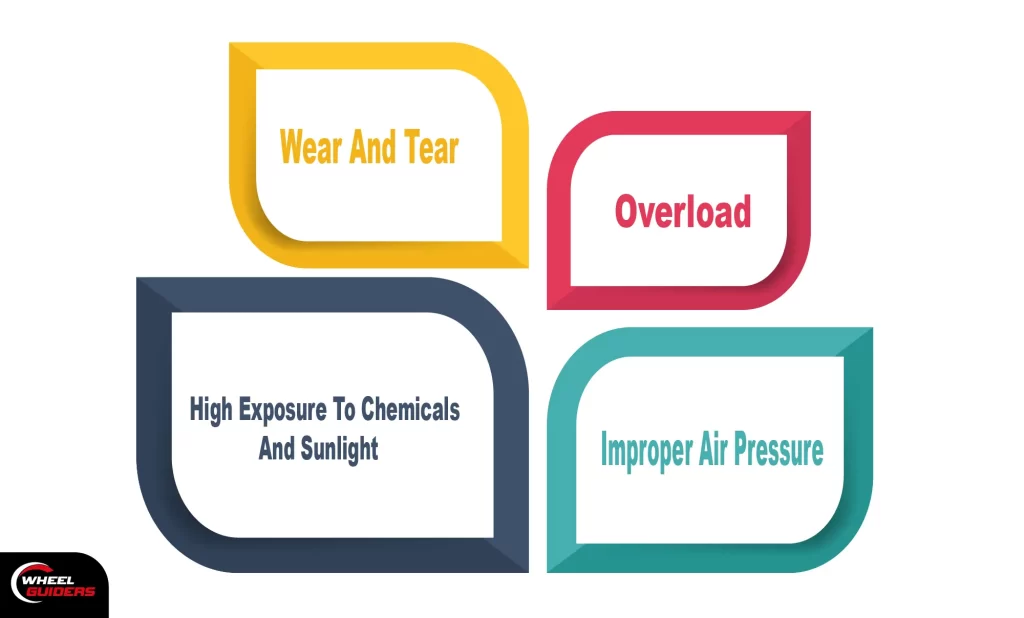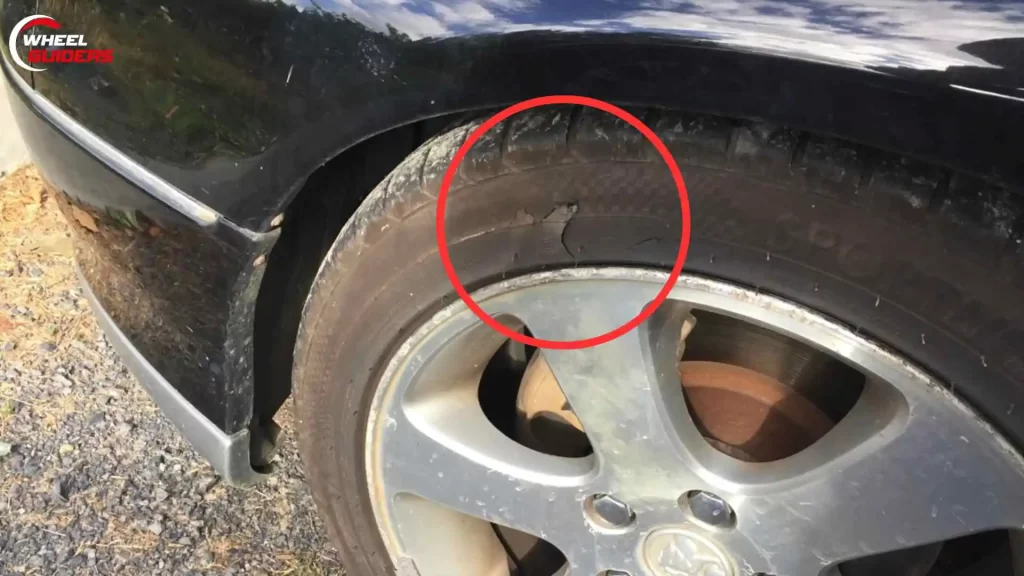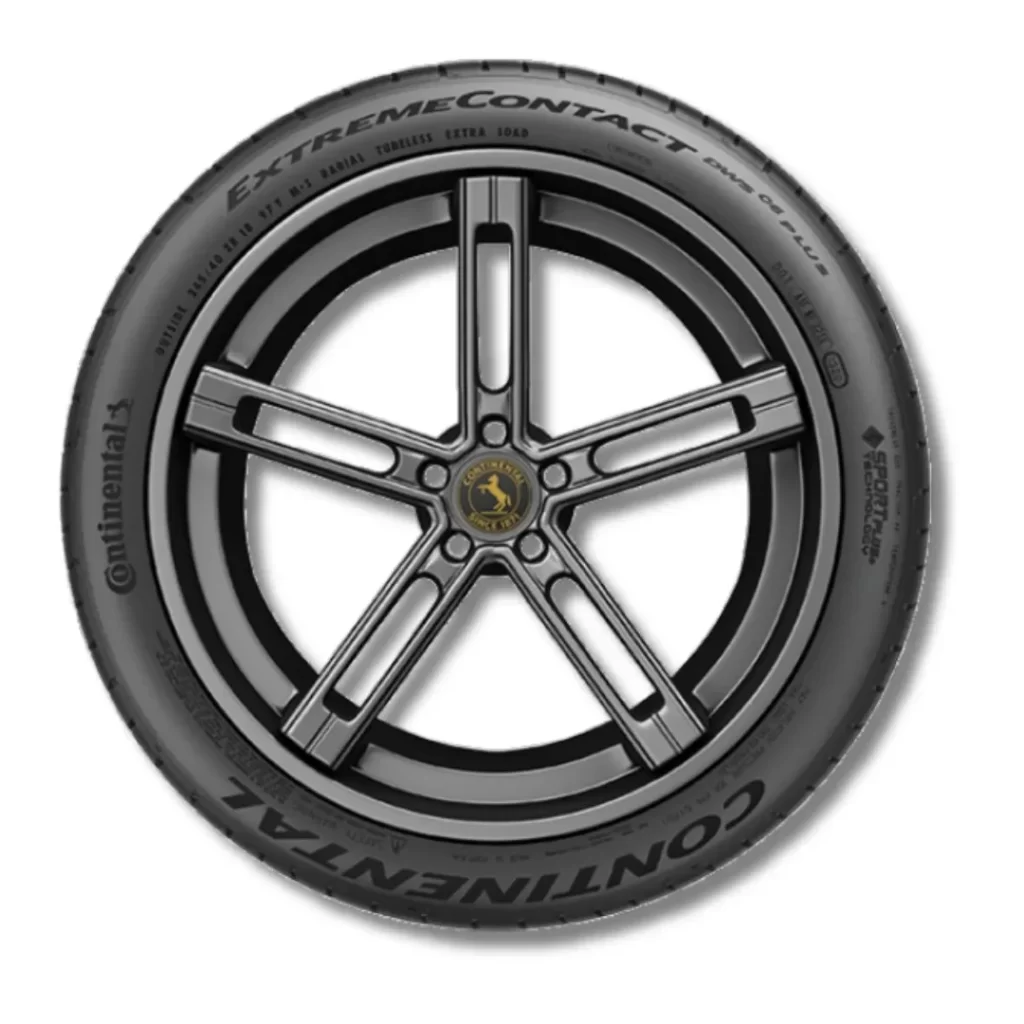How Close To Sidewall Can A Tire Be Patched – Expert Guidelines
It’s difficult to see our tire damage beyond repair. Leaving us with the hefty cost of replacing it all over again. Mechanics recommend changing tires to make more profit at times.
So it’s important to find a trustworthy mechanic and familiarise yourself with the essential tips discussed in this article to better assess the condition of your tires and avoid unnecessary tire replacements and make informed decisions.
How close to sidewall can a tire be patched? Tire experts recommend not patching a tire too close from its sidewall. However, it can be patched if the damage is 2 inches from the sidewall. Punctures within 2 inches of the sidewall cannot be patched as they are located on the shoulder of the steel belt, which can weaken the tire if patched and posses driving hazards.

Can You Patch The Sidewall Of A Tire?
The most common reason for a tire to need a patch is due to punctures caused by nails, screws, or other sharp objects lying on the road. The tire should be replaced immediately if a puncture occurs within 2 inches of the sidewall.
This is because punches that occur on the sidewalls of a tire do not withstand patches for a long time. Moreover, if the tire is damaged or punctured up to the sidewalls or shoulder, then it means that the damage is severe, and can affect the overall structure of the tire.
Even minor scratches on the skin of the sidewall are unimaginably dangerous. As the sidewalls of a tire continue to deteriorate over time, the tire becomes more susceptible to blowouts.
Tire Sidewall Damage Causes And Solution
Several factors are responsible for causing damage to the side walls of a tier. Below, I have listed some of the most important factors –

Wear And Tear
Excessive and aggressive usage of the same tire for a long time can cause changes in the entire structure of the tire. The heavy wearing and tearing of the tire can cause it to dry out and develop cracks on the sidewall. These cracks are mild in the beginning, but they spread out quickly, making the tire weak and hazardous.
To avoid cracks and premature wear and tear, it is best to store tires properly, avoid diving aggressively and maintain the recommended PSI.
Overload
Overloading the vehicle more than its capacity can put more stress and strain on the shoulder of the tire, causing it to reduce its lifespan and build up more heat on the tires.
To ensure that you do not overload the vehicle, experts recommend referring to the owner’s manual and loading the vehicle according to the specified limit
Improper Air Pressure
When the tires of the vehicle are either under inflated or overinflated, it can lead to a change in the structure of the tire and cause damage, tears, holes, or cracks on the sidewall of the tire. So it’s important to inflate your tire to the recommended pressure level.
High Exposure To Chemicals And Sunlight
Extreme exposure to sunlight and chemicals on the tire’s surface can cause it to melt or change its chemical configuration, which might lead to sagging of the tires. Riding on sagged tires can cause the tire sidewall to reduce stability and increase the risk of puncture and blowouts.
To avoid extreme Exposure to sunlight and chemicals, it is advisable to park the vehicle in the shade and use tire covers while cleaning them regularly. Experts also suggest rotating tires every 5,000 to 7,500 miles to ensure their safety and durability.
Why Can’t A Tire Sidewall Be Patched?
The reason why a tire cannot be patched in its sidewall is that it deteriorates the tire’s longevity and weakens it over time
A tire’s tread contains a network of cords, which remains sturdy when coming into contact with the road’s surface. But these chords are not present around the side wall area of the tire.
If a puncture or damage is repaired around the sidewalls or shoulder of a tire, it is more likely to experience intense damage due to excess pressure. This could lead to potential repair failure.

Once there is damage caused in the sidewalls of a tire, immediate replacement to atleast a donut tire is needed because it compromises the integrity of the tire and the vehicle’s safety. It is not safe to drive a tire that is abraded even lightly. Damages caused on tires anywhere apart from the shoulder and sidewalls can be repaired.
How Thick Are Tire Sidewalls?
Usually, there is a variation in the thickness of the tire sidewall ranging from the area between the shoulder and the beads.
The thickness of the tire’s sidewall varies based on the brand, quality, and intent of the use. Generally, tire manufacturers manufacture most tire sidewalls with a thickness of 6 to 15 mm, which is about 1/4 to 5/8 inches.

How To Patch A Tire Sidewall?
Repairing a tires with a damages sidewall is not possible. You can patch it temporarily until you replace the tire from the nearest garage. It is not advisable to drive a vehicle with a patched or mended tire sidewall.
This is because even a small damage caused to the sidewalls of a tire can result in the collapse of its full structural support. But you can manage to patch it for a short time until you replace it immediately by patching it with a high quality adhesive patch.
How To Patch A Tire From The Outside?
Experts do not recommend patching a tire from the outside. However, in the state of emergency, if you need to drive to the nearest garage for the replacement of the tire, then you can temporarily patch it from outside.
Making sure that the patch should be adhesive and that the hole should be no larger than 1/4 inch (in diameter) and not too close to the side walls or shoulder of the tire.
Regularly checking tire pressure is important to ensure that the tire maintains the recommended PSI in order to keep the patches intact. In case of a puncture, external patching of the tire is highly inadvisable, and immediate replacement of the tire is mandatory.
What Causes Hole In Tire Sidewall?
Sidewall is a sensitive part of the tire. When a tire is underinflated, it damages the sidewall first. An under-inflated tire stretches more in the side wall causing it to reshape and sag due to heating while driving at high speed.
In extreme climates, driving aggressively on a hot surface can worsen the condition of the sidewalls, but taking preventive measures beforehand can help maintain them.
In some cases, holes on sidewalls do not occur immediately. They might have first occurred in the tread of the tire, which slowly spreads on the side walls causing damage to the area. These tires are highly dangerous and are most likely to burst under pressure. Even a minute scratch seen in the sidewalls of a tire is dangerous, and you should replace it immediately for safety concerns.
Should You Replace A Tire With Sidewall Damage?
Definitely yes. You should not take any damage to the sidewall lightly. It is more dangerous than the damages caused in any other part of the tire. Whether it is a bulge, scratch, crack, or hole in the tire’s sidewall, immediate changing of the tire is essential for ensuring safe driving.
What Kind Of Damage To A Tire Can And Cannot Be Repaired?
You can repair any tire that has a hole, at most 6mm or 1/4 inch in diameter.
Best Sidewall Tire Repair Kit
If you don’t find garages or repair shops nearby, then a sidewall tire repair kit can come to your help. Keeping repair kits handy will help you mend your tire then and there quickly. I would recommend getting the Glue tread sxs UTV sidewall tire repair kit for its easy to apply and saves time.
Manufacturers typically design these kits for multipurpose usage, making them suitable for both light passenger vehicles and heavy load vehicles. It is always safe to keep these repair kits in your vehicle, especially when traveling to remote areas where you might not be able to replace your car tires immediately.
While I recommend using repair kits or flex seal only as temporary solutions. How close to sidewall can a tire be patched? I would recommend replacing the tires if the damage is within a 2-inch radius, if you are seeking a safe solution.
Why Can’t You Patch A Tire Shoulder?
A tire’s shoulder is as sensitive as the side walls. They might need high supervision and immediate replacement when damaged like the sidewalls because shoulder injuries in tires are equally serious as sidewall injuries.
So patching up tires in their center and tread area is acceptable, but not anywhere in the shoulder or side walls of the tire. They are unrepairable.
Conclusion – How Close To Sidewall Can A Tire Be Patched
It is safe to use a vehicle that has tires slightly damaged in the center and tread area. Still, frequent supervision and renovation of the parts are necessary until you replace the tire with a new one completely.
Now that you have understood how close to sidewall can a tire be patched, lets move on and see what Most tire manufacturers and industry experts advice. They advice changing the tire completely if you find any damage, more than slight scratches or small punctures. Ultimately, it is best to prioritize safety over money and maintain regular maintenance of tires and replacements if necessary.
On the other hand, it is easy to keep your tires sidewall in good shape. It is always beneficial to change routes if the road conditions are rough, as it can help ensure the good life of your tires while increasing their durability and grip. Tires with better grip not only make driving comfortable but also ensure safety.
With more durable tire sidewalls, you can help save for the next set of tires. Benefits of maintaining tire sidewalls –
